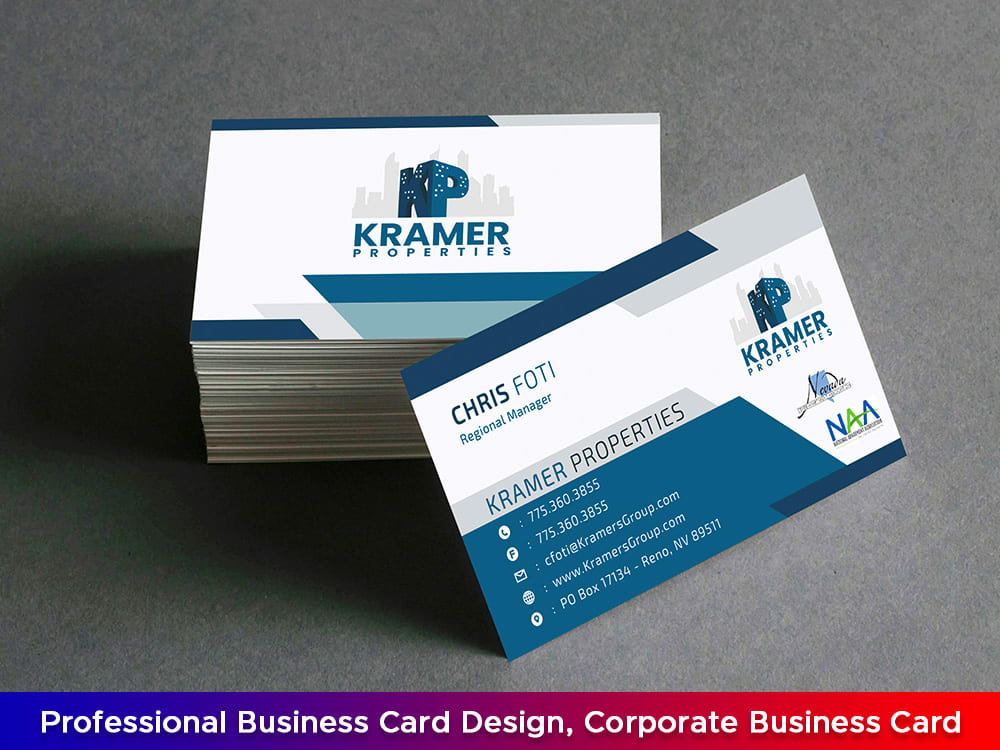Business Cards: The Unwavering Importance in a Digital Age

Introduction
In today’s fast-paced digital world, you might wonder if still hold any significance. Surprisingly, they do! Business cards have not lost their charm or utility, even as we increasingly rely on digital communication. These small pieces of cardstock remain a powerful tool for personal branding, networking, and leaving a lasting impression.
Why Business Cards Still Matter in a Digital Age
Personal Touch
In a world dominated by emails and social media, a business card offers a personal touch. Handing someone your card is a gesture of goodwill and professionalism, showing that you value the connection.
Tangibility
Unlike a digital contact, a business card is tangible. It can be held, felt, and examined closely. This physical interaction often creates a stronger memory association than merely exchanging contact information via phone.
First Impressions
A well-designed business card can make a striking first impression. It’s often the first piece of your brand that a new contact sees, and it can set the tone for your business relationship.
Designing an Effective Business Card
Choosing the Right Layout
The layout of your business card is crucial. It should be clean and easy to read, with a logical flow of information. Avoid clutter by prioritizing the most important details.
Selecting Colors and Fonts
Colors and fonts are not just aesthetic choices—they communicate your brand’s personality. Choose colors that align with your brand and fonts that are legible and professional.
Incorporating Your Brand
Your business card should reflect your brand’s identity. Include your logo, use your brand colors, and maintain consistency with other marketing materials.
Essential Elements of a Business Card
Name and Title
Your name and title are the primary pieces of information on your business card. Ensure they are prominently displayed and easy to read.
Contact Information
Include multiple ways for people to reach you, such as your phone number, email address, and website. Make sure this information is accurate and up-to-date.
Logo and Branding
Your logo is a visual representation of your brand. It should be clearly displayed on your business card to enhance brand recognition.
Types of Business Cards
Standard Business Cards
Standard are the most common type. They are typically 3.5 x 2 inches in size and printed on cardstock.
Premium Business Cards
Premium business cards use higher-quality materials and printing techniques. They might feature embossing, foil accents, or thicker paper stock.
Unique and Custom Business Cards
For a memorable impression, consider unique and custom business cards. These might include non-standard shapes, special finishes, or interactive elements.
Material Options for Business Cards
Paper Business Cards
Paper is the most traditional material for business cards. It’s versatile, cost-effective, and suitable for most businesses.
Plastic Business Cards
Plastic business cards are durable and waterproof. They offer a modern look and feel, making them stand out from paper cards.
Metal Business Cards
Metal business cards are luxurious and highly durable. They’re perfect for high-end brands looking to make a strong statement.
The Role of Business Cards in Networking
Starting Conversations
A business card can be a great conversation starter. It provides a reason to approach someone and can help break the ice in networking situations.
Building Relationships
Exchanging is a step towards building a professional relationship. It shows you’re serious about staying in touch and opens the door for future interactions.
Follow-Up Strategies
After exchanging business cards, follow up with a personalized message. Refer to your meeting to keep the connection warm and professional.
Creative Ideas for Business Cards
Interactive Elements
Add interactive elements like fold-out sections or pop-ups to make your business card more engaging and memorable.
QR Codes
Include a QR code that links to your website or LinkedIn profile. This makes it easy for people to learn more about you and your business.
Unconventional Shapes and Sizes
Break away from the standard rectangular card. Unique shapes and sizes can make your card stand out and be more memorable.
Common Mistakes to Avoid
Overcrowding Information
Keep your business card simple. Overcrowding it with too much information can make it hard to read and less effective.
Poor Quality Printing
Invest in high-quality printing. Poor print quality can make your business look unprofessional.
Lack of Consistency
Ensure your business card is consistent with your other marketing materials. This helps to reinforce your brand identity.
How to Distribute Business Cards Effectively
During Networking Events
Always have your handy at networking events. They’re perfect for exchanging contact information in a professional setting.
In Everyday Situations
You never know when you might meet a potential client or partner. Carry with you daily, even during casual outings.
Through Mail
Include business cards in mailings, such as thank-you notes or product shipments. It’s a simple way to spread your contact information.
The Future of Business Cards
Digital Business Cards
Digital are becoming more popular. They can be shared via smartphones and offer interactive features like clickable links and videos.
Sustainability in Business Cards
Eco-friendly business cards made from recycled materials are on the rise. They appeal to environmentally conscious clients and demonstrate your commitment to sustainability.
Case Studies: Successful Business Cards
Examples from Various Industries
Explore successful business card designs from different industries. Learn what makes them effective and how you can apply similar strategies.
Lessons Learned
Analyze what works and what doesn’t in business card design. Apply these lessons to create a card that effectively represents your brand.
DIY vs. Professional Printing
Pros and Cons of DIY Printing
DIY printing can save money, but it might not achieve the same quality as professional printing. Consider the trade-offs before deciding.
Benefits of Professional Printing Services
Professional printing services offer high-quality materials and finishes. They ensure your look polished and professional.
Cost Considerations for Business Cards
Budgeting for Business Cards
Determine your budget for. Consider the materials, printing techniques, and quantity needed.
Factors Affecting Cost
Several factors affect the cost of including material, design complexity, and printing method. Choose options that fit your budget and brand image.
Conclusion
Business cards may seem old-fashioned in our digital age, but they remain a vital tool for personal branding and networking. From making a strong first impression to providing a tangible reminder of your brand, business cards have a lasting impact. Invest in high-quality, well-designed business cards to elevate your professional presence and foster meaningful connections.
FAQs
1. Are business cards still relevant today?
Yes, business cards are still relevant. They provide a personal touch and a tangible way to share contact information, making a lasting impression in a digital world.
2. What should be included on a business card?
A business card should include your name, title, contact information, and your logo. Ensure the design reflects your brand identity.
3. How can I make my business card stand out?
Use high-quality materials, unique designs, and interactive elements like QR codes. Consistency with your brand is also key.
4. What are the benefits of professional printing services?
Professional printing services offer high-quality materials and finishes, ensuring your business cards look polished and professional.
5. How should I distribute my business cards?
Distribute business cards during networking events, in everyday situations, and through mail. Always have them handy to seize any opportunity to connect.






